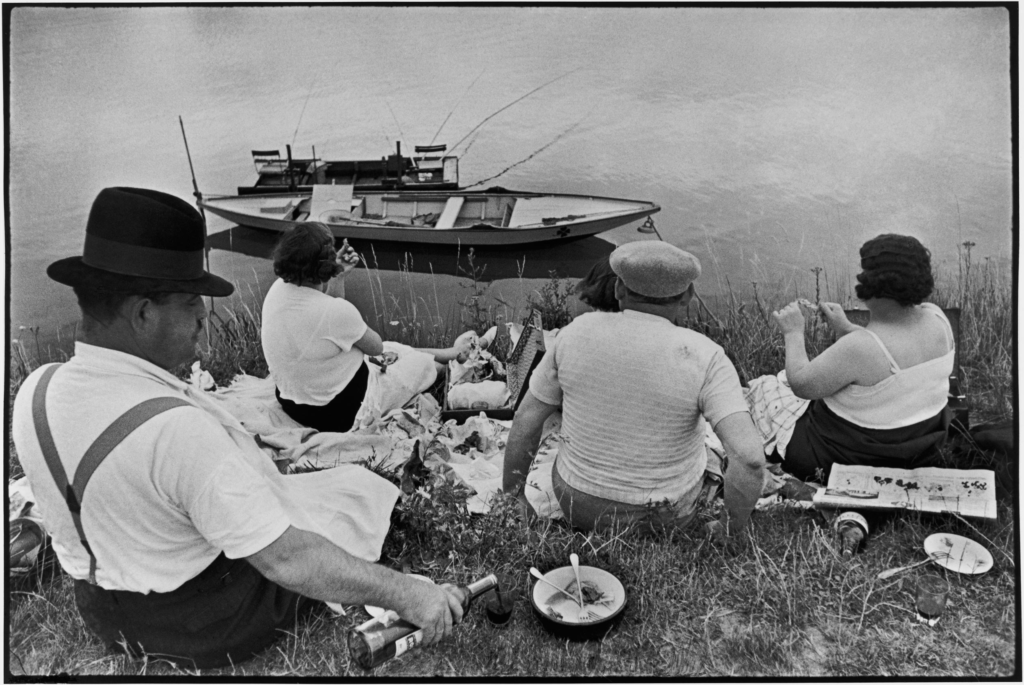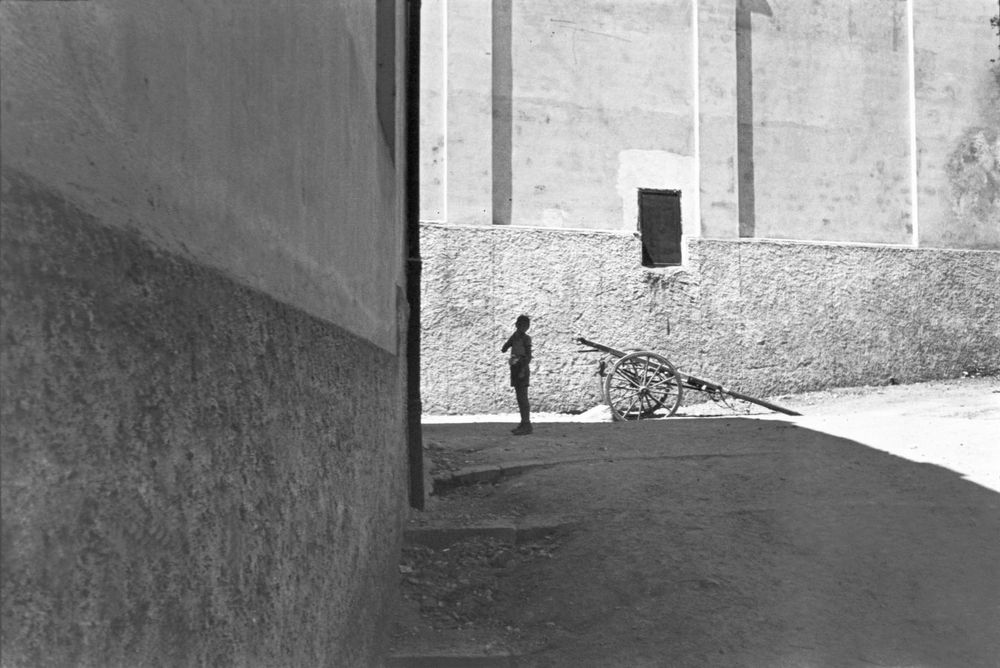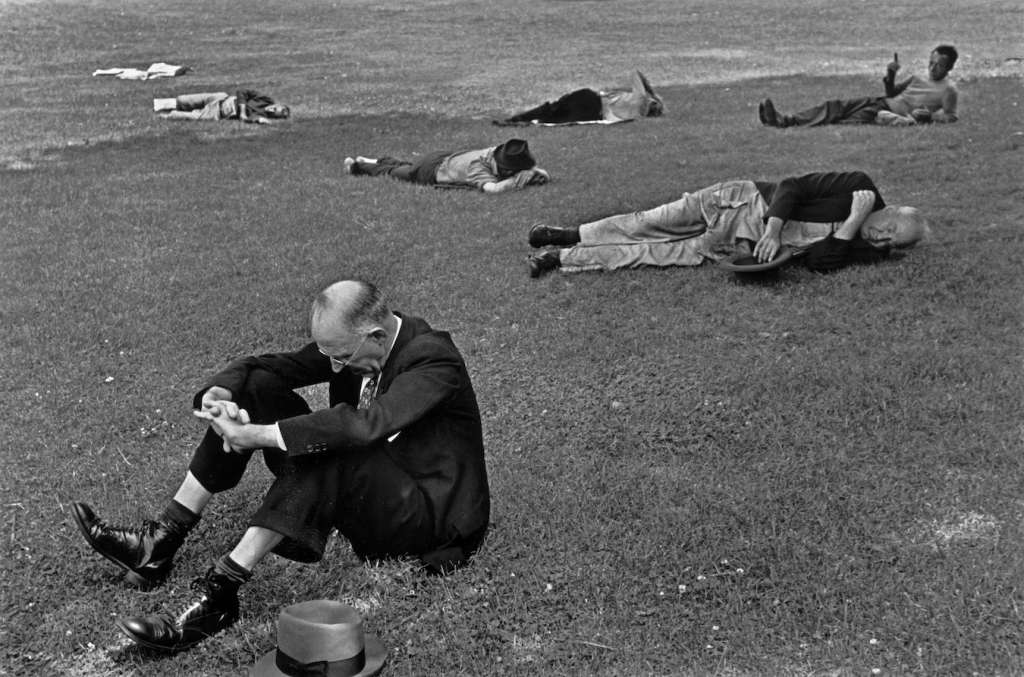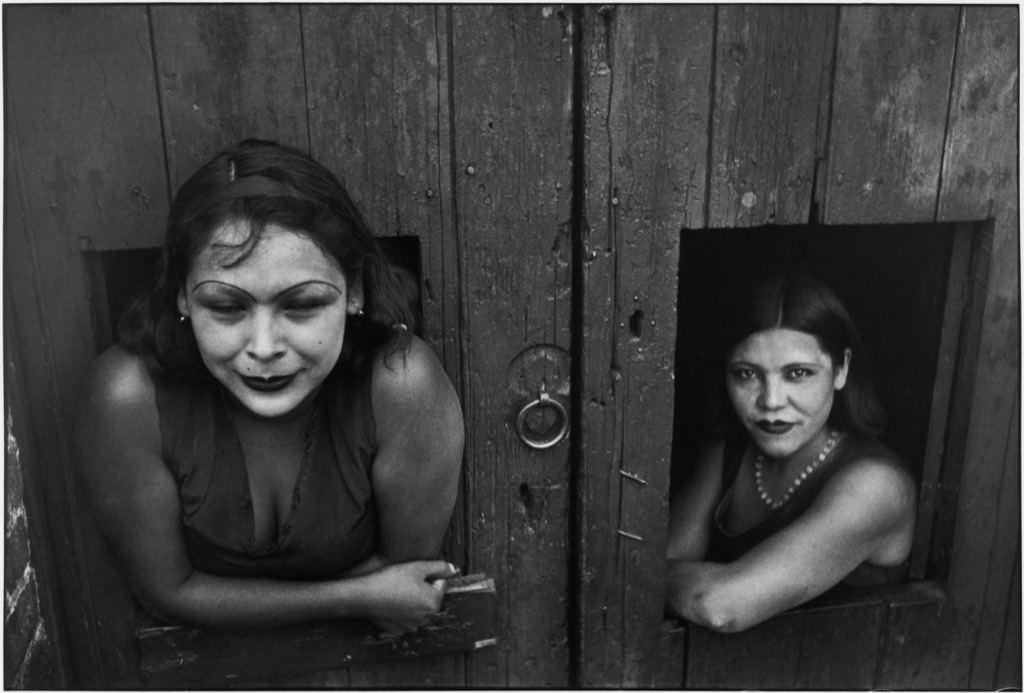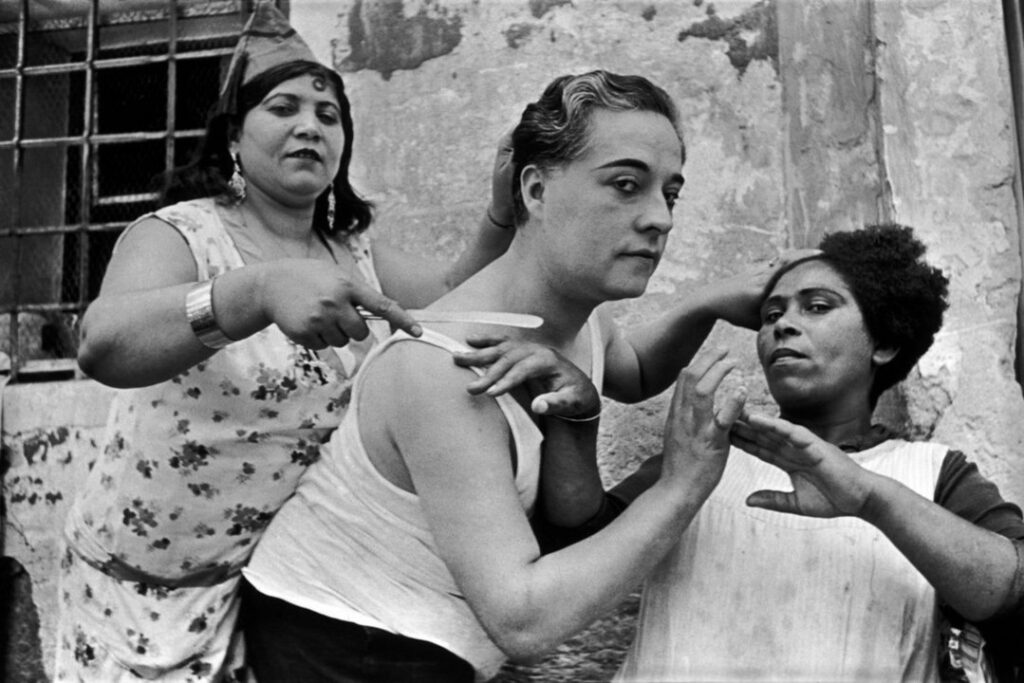











BIOGRAPHY
Henry Cartier-Bresson who was born in August 22, 1908, Chanteloup, France who then died on the 3rd of August 2004, was a phenomenal photographer whose photographs helped show Photojournalism as an art form. He expresses his theory towards photography, where it implies that photography can capture the meaning beneath outward appearance in instants of extraordinary clarity, in his book of images à la sauvette
He attended school in a village not far from Paris and in 1927 until 1928 he studied in Paris with Andre Lhote, an artist associated with the cubist movement. With Lhote’s help, her placed Henry a lifelong interest in painting which was a crucial factor in the education of his vision. Then in 1929, he went to study literature and painting in the University of Cambridge.
Some of Cartiers images had been exhibited in 1933 in the Julien Levy, Gallery in New York City. In the same year, in partnership with the U.S photographer Robert Capa and others, founded the cooperative photo agency called Magnum photos. This amazing organisation gifted periodicals global coverage by some of the most talented photojournalists of the time. This is where Cartiers concentration towards reportage photography became at its finest. The following three years, he was found in, India, Indonesia, Egypt and China. The materials taken in this time and in 1950s Europe, allowed him to create subjects to his many books which were published between 1952 and 1956. These publications majorly helped his reputation as a master of his craft.
In mention of his crafts which is best known as, Images à la sauvette, consists of an important statement with great meaning, utility of photography and technique.
“I prowled the streets all day, feeling very strung-up and ready to pounce, determined to ‘trap’ life – to preserve life in the act of living. Above all, I craved to seize the whole essence, in the confines of one single photograph, of some situation that was in the process of unrolling itself before my eyes.”
THE DECISIVE MOMENT
The decisive moment is described as something that explain Cartier-Bresson’s influential publication. This concept is said to be internationally one of the most critical photobooks in the Twentieth century.
Robert Capa, described it as “a bible for photographers”
Originally titled as “images a la sauvette” which means images on the run in French. The book was published in English with a new title the decisive moment. It is Frequently described as “capturing an event that is ephemeral and spontaneous, where the image represents the essence of the event itself”. However, it is the complete opposite because it is about taking pictures in a dynamic and moving world.
“Your eye must see a composition or an expression that life itself offers you, and you must know with intuition when to click the camera.” – Henri Cartier-Bresson
MOOD BOARD:
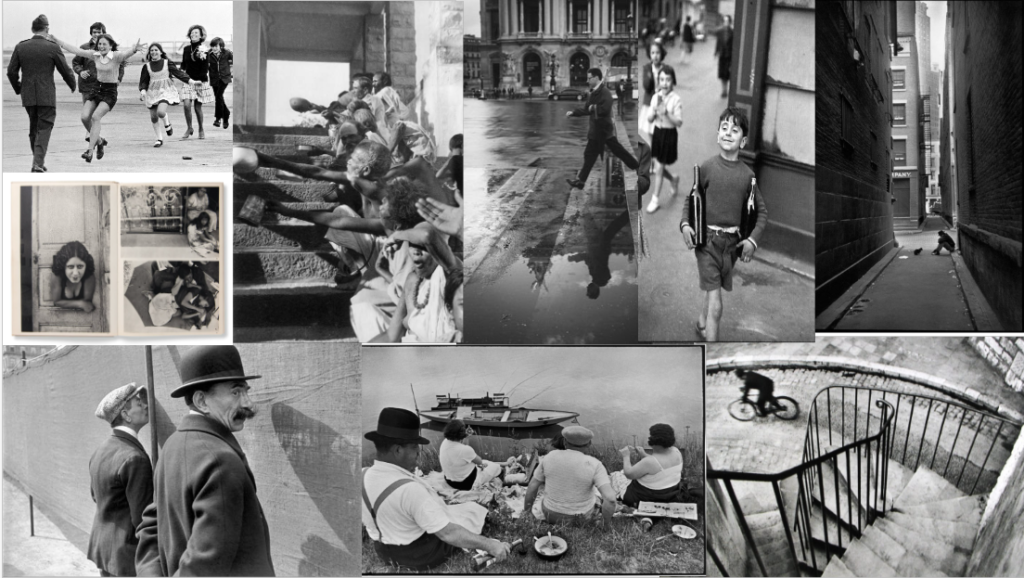
Why is a camera an extension of the eye?
it is believed that the camera is an extension of the eye because it shows what one sees and is able to capture what one sees. Its also an extension because it can capture something that is not seen up close by the human eye but is captured by the camera.
What is the physical pleasure in making photographs?
The pleasure of being able to create an image that has simplicity or depth. The pleasure of producing images and capturing a moment to remember and romanticise. The whole process of producing an image is rewarding and quite fulfilling.
How can photography be links to hunting?
In photography, some hunt for a certain subject or a certain scenario or person. Like hunting, where they wait for the prey to come in sight, its like taking pictures. You wait until you capture the perfect subject, scenario, environment etc. Photographers are hunting for the ultimate picture. Its a decisive moment.
Please note that AI may have been used to construct this blog
Henri Cartier-Bresson Case study –
Henri Cartier-Bressons work, as he puts it, is a ‘physical pleasure’. By carrying a camera he says it is an ‘extension of the eye’. This can be seen in his collection of photographs that capture a preserved time capsule of day to day life.
Biography –
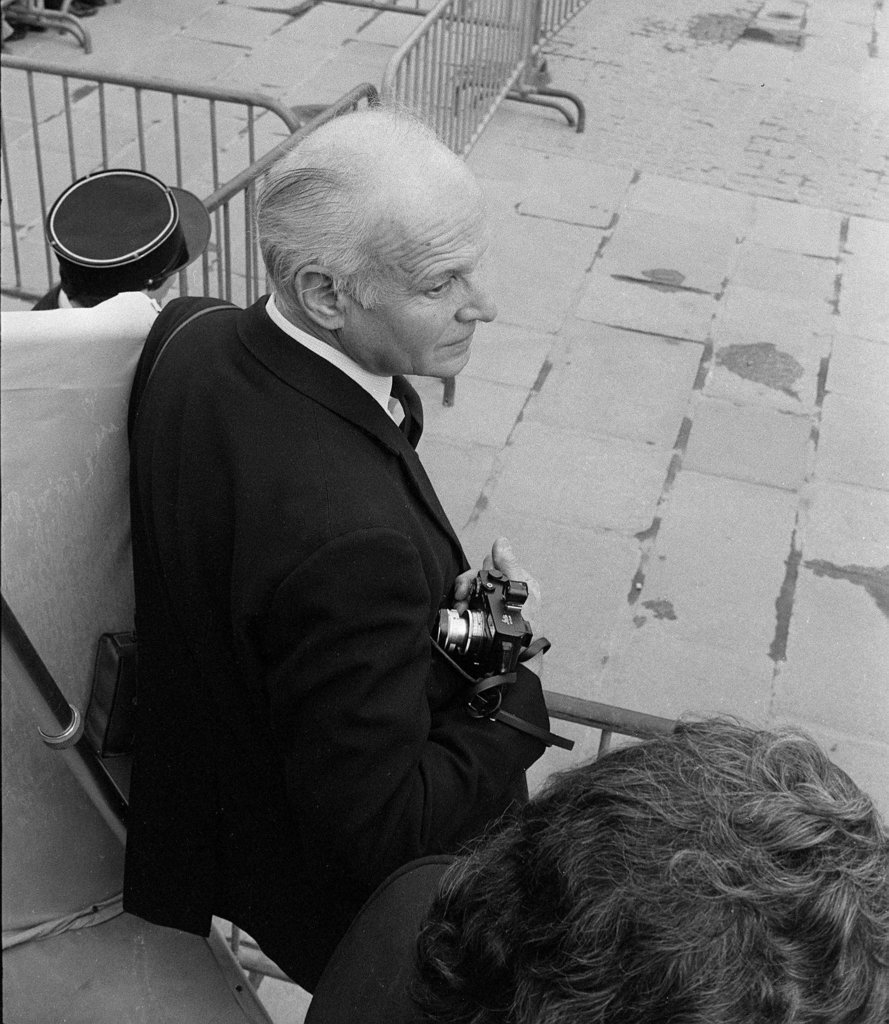
Born 22nd August 1908, in the outskirts of Paris in Chanteloup, Seine-et-Marne, Henri Cartier-Bresson grew up with an interest for art. Initially showing a fascination in surrealism painting, in 1932, during a year-long stay in the ivory coast, he discovered his passion for photography with a Leica, his camera of choice.
First exhibiting his artwork only a year later, It featured at the Julien Levy Gallery in New York. During the Second World War, Cartier-Bresson joined the French army, where he was promoted to a corporal in their Film and Photo unit. In 1940 during the invasion of France he was captured by German soldiers, up until 1943 he was a prisoner of war in which he managed to escape from on his third attempt. Joining an underground resistance network, he helped others escape from nazi captivity.
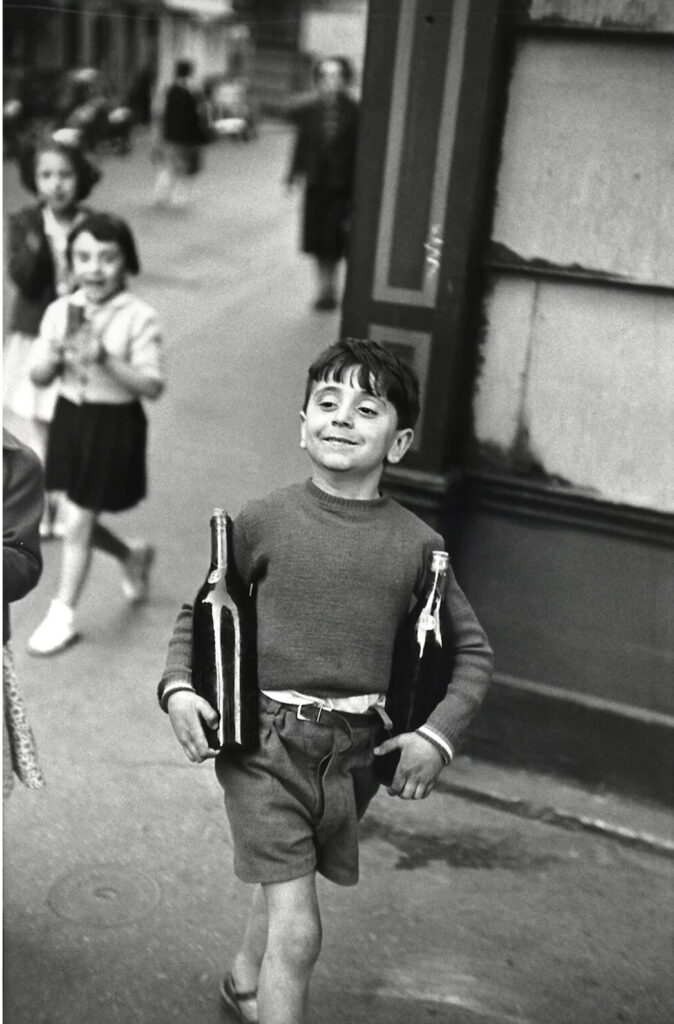
Rue Mouffetard, Paris, 1954
During the liberation of Paris in 1945, he photographed the allied victory with a group of professional journalists and then went on to film the documentary Le Retour (The Return).
Post war, he met up with other famous war photographers who served like him during the conflict, the most notable being Robert Capa, As well as some others like George Rodger, David “Chim” Seymour and William Vandivert, here they collectively founded Magnum Photos. An organisation that till this day, represents photographers, and exhibits and licenses their work.
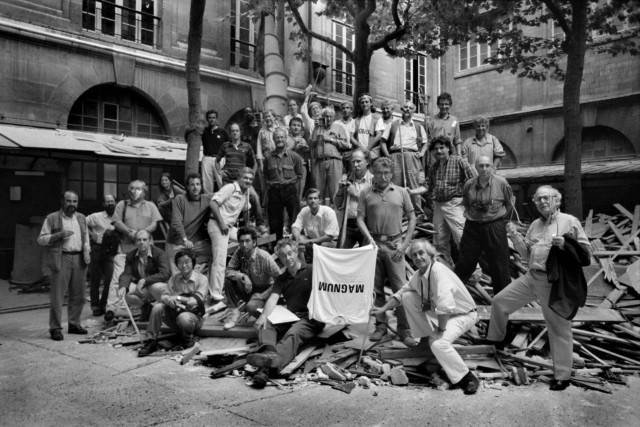
Magnum photographers during their annual meeting. Courtyard of the Lycée Fénelon, Paris. June 1990.
Spending 3 years travelling in the East, Cartier-Bresson retuned back to Europe in 1952, once returned, He published his first book, à la Sauvette, in english meaning ‘The Decisive Moment’.
In This book, Cartier-Bresson defines his approach to Photography…
“for me the camera is a sketch book, an instrument of intuition and spontaneity, the master of the instant which, in visual terms, questions and decides simultaneously… It is by economy of means that one arrives at simplicity of expression.”

A young Cartier-Bresson, holding his signature Leica.
Later on in life Cartier Bresson, made a return to painting in 1968. In 2003, his wife and daughter created the Foundation Henri Cartier-Bresson in Paris to preserve his legacy and his work. Throughout his lifetime, He had received numerous awards, prizes and honorary doctorates. A year later he passed away in his home, located in Provence on August 3rd, 2004.
’The Decisive Moment’ –
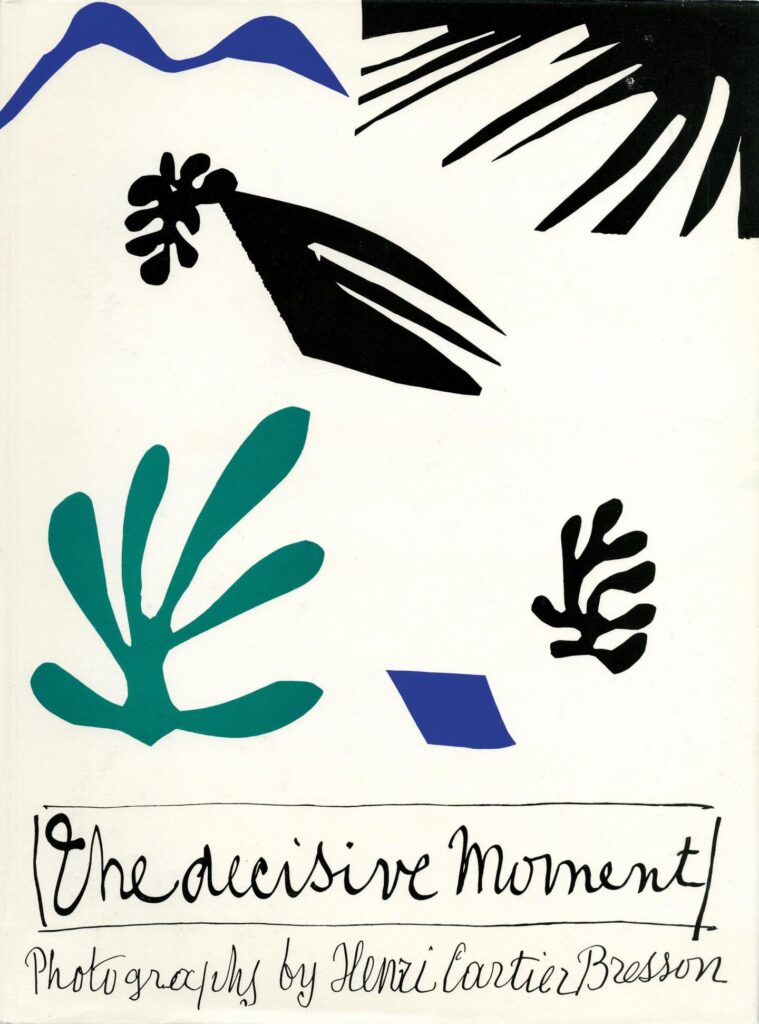
Henri Cartier-Bresson, in his book ‘The Decisive Moment’, created a series of images, pioneering in their unique story telling and have since been widely considered as one of the most important photo books of the 20th century. Described by Robert Capa as ‘a Bible for photographers’ his book is an interesting dive into the world through a camera.
The concept of the decisive moment comes from the idea that everything that occurs happens in a flow of events, In Cartier-Bresson’s eyes, there are moments within these events that contain a perfect arrangement within a frame. These moments are always spontaneous and often never repeat themselves, therefore making the photographer vigilant to be ready to capture that decisive moment.
Cartier-Bresson believed that the process doesn’t come randomly through attempts to capture that moment, it is up to the photographer to observe, anticipate and patiently wait for your focus to choose something you notice and let that be your decisive moment. To get the perfect image, timing and composition make up 2 strong factors in creating a impactful image such as Cartier Bresson’s. Another big part is the meaningful element, this can something that conveys an emotion or statement, for example a couple, someone doing a job, people enjoying something etc.
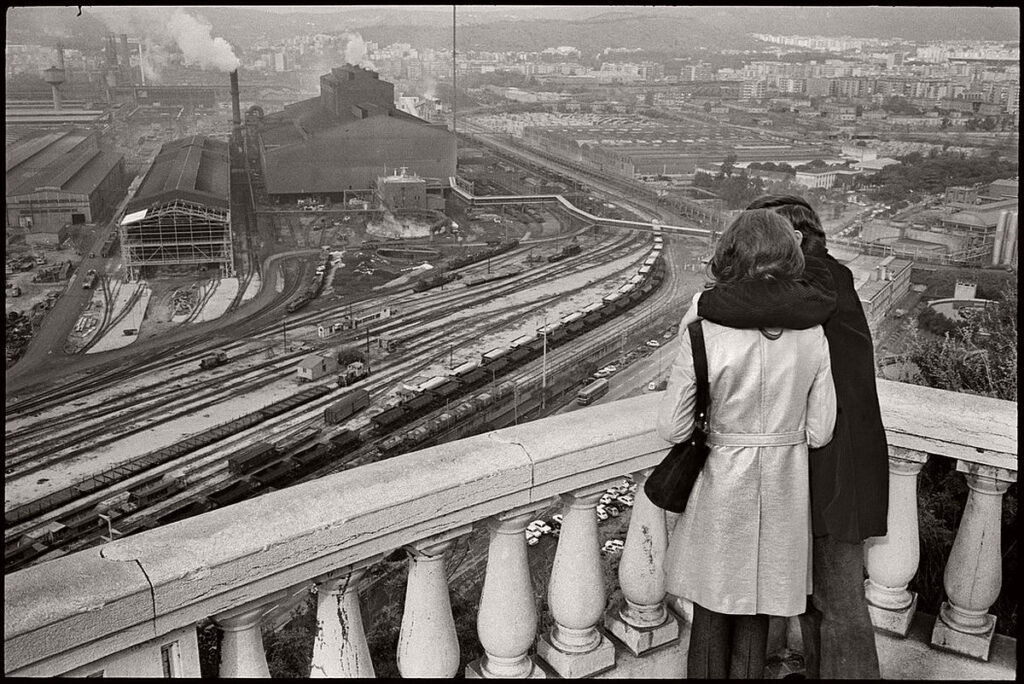
Mood Board –

